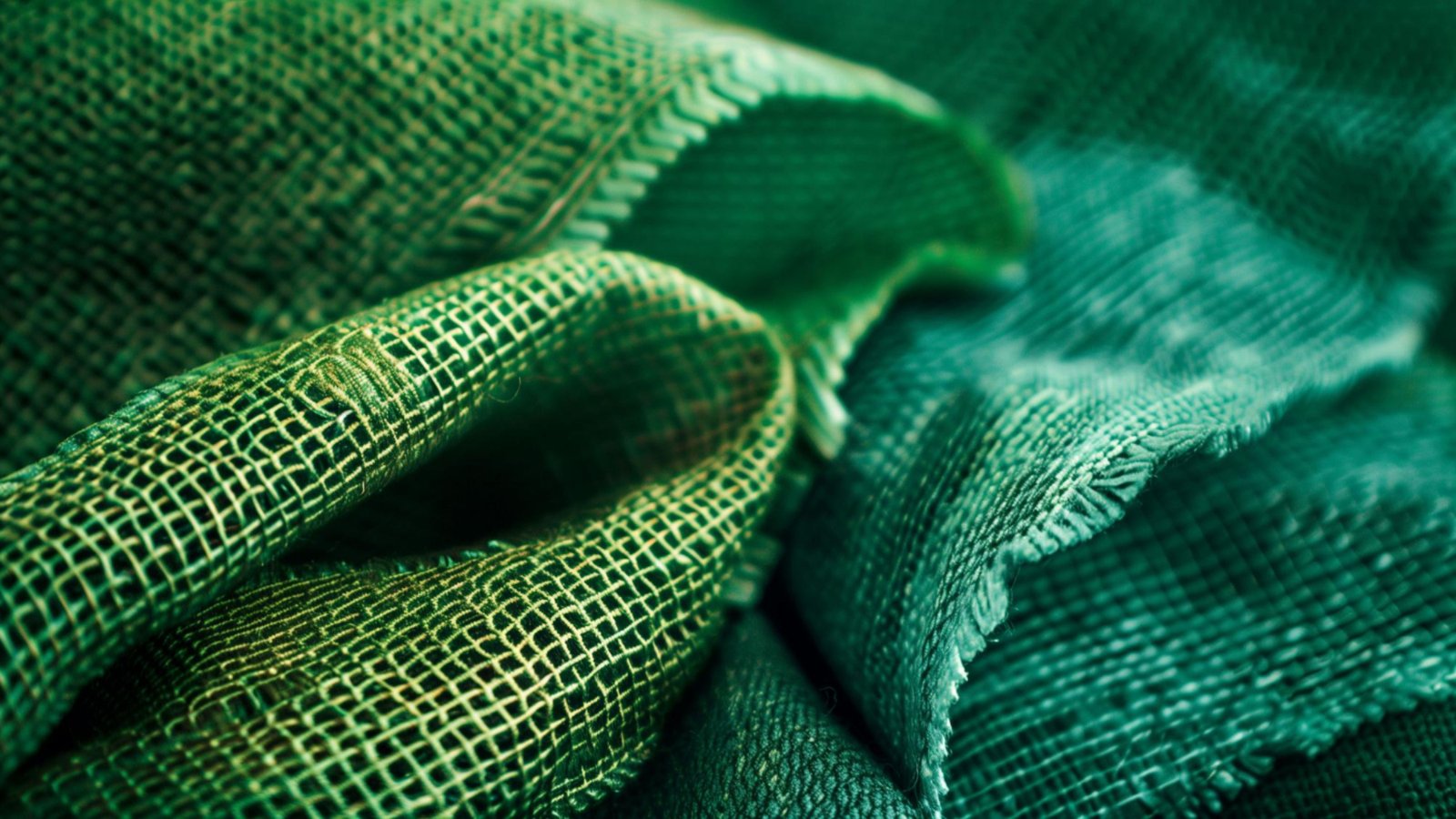The textile industry is undergoing a critical transformation as sustainability becomes a global priority. Conventional fabrics often demand excessive water, energy, and chemical use, making the shift toward greener solutions both urgent and necessary. At the core of this transition are sustainable textile materials, which offer a pathway to reduce environmental impact while maintaining performance and quality. These eco-friendly fabrics are designed with lower resource consumption, recyclability, and safer production methods in mind. From organic cotton and hemp to recycled fibers like rPET and advanced innovative textiles such as Piñatex and plasma-treated fabrics, a wide range of options is shaping the future of manufacturing. Together, these materials empower brands and manufacturers to meet rising sustainability standards while building stronger connections with eco-conscious consumers.
What You Will Learn in This Article
- What Are Sustainable Textile Materials?
- Key Challenges in Traditional Textile Materials
- Top Sustainable Textile Materials
- The Role of Technology in Enhancing Sustainable Materials
- Benefits of Using Sustainable Textile Materials for Manufacturers
- Future Trends in Sustainable Textiles
1. What Are Sustainable Textile Materials?
Sustainable textile materials are fabrics designed to minimize environmental impact while maintaining durability and performance. Unlike conventional textiles that often depend on intensive water use, fossil-based fibers, and chemical-heavy processing, sustainable options prioritize cleaner and safer production. These eco-friendly fabrics are defined by key criteria: reduced water and energy consumption, use of recyclable fibers or renewable resources, and avoidance of toxic chemicals during finishing. Examples include organic cotton, recycled polyester, hemp, and innovative low-impact textiles treated with advanced technologies. As governments, brands, and consumers demand greener solutions, these materials are becoming essential for the industry’s future. They not only help reduce carbon emissions and pollution but also support compliance with global standards and create stronger trust with eco-conscious markets.
2. Key Challenges in Traditional Textile Materials
The textile industry has long relied on conventional materials that bring hidden environmental costs. Conventional cotton, for example, demands enormous amounts of water and energy during cultivation and processing, straining already limited natural resources. Dyeing and chemical finishing processes add another layer of impact, releasing hazardous effluents into rivers and soils and contributing to air and water pollution. Meanwhile, the industry’s heavy dependence on non-renewable resources, particularly petroleum-based polyester, locks manufacturers into unsustainable supply chains tied to fossil fuels. Beyond production, end-of-life management also poses a serious challenge. Millions of tons of discarded textiles end up in landfills each year, where synthetic fibers can take centuries to decompose, generating long-term waste problems. These challenges highlight the urgency of transitioning toward sustainable textile materials that reduce water and energy consumption, rely on renewable or recycled inputs, and support circular solutions to minimize waste.
3. Top Sustainable Textile Materials
The shift toward sustainable textile materials is reshaping how fabrics are sourced, processed, and used across industries. These eco-friendly alternatives not only reduce the environmental burden of production but also deliver durability, comfort, and performance.
From organic cotton and recycled polyester to hemp, linen, and Lyocell, these sustainable textile materials are redefining the future of the industry. Each offers unique advantages—whether it’s reduced water consumption, lower carbon emissions, natural durability, or closed-loop manufacturing. Together, they provide a roadmap for textile producers and brands to align with sustainability targets, comply with global certifications, and meet consumer demand for eco-friendly fabrics.
Below are some of the most impactful sustainable fabrics that are paving the way for a greener textile industry.
Organic Cotton
Organic cotton is one of the most widely recognized sustainable textile materials. Unlike conventional cotton, which is notorious for its high water demand and pesticide use, organic cotton requires significantly less water and is cultivated without toxic chemicals. This makes it safer for farmers, ecosystems, and end-users. Certified by internationally recognized standards such as GOTS (Global Organic Textile Standard) and OEKO-TEX® Standard 100, organic cotton ensures strict environmental and social criteria are met throughout the supply chain. Beyond reducing harmful inputs, organic cotton provides the same comfort, breathability, and versatility that make cotton the world’s most popular fiber—only with a much smaller ecological footprint. As brands respond to growing consumer demand for eco-friendly fabrics, organic cotton is increasingly becoming the material of choice in fashion, home textiles, and even technical applications.
Recycled Polyester (rPET)
Recycled polyester (rPET) represents another major advancement in sustainable materials. Produced from post-consumer waste such as used PET bottles, rPET reduces dependence on virgin petroleum, one of the textile industry’s biggest environmental challenges. Transforming plastic waste into new fibers prevents millions of bottles from ending up in landfills or oceans each year. While maintaining the durability, elasticity, and moisture-wicking qualities of conventional polyester, rPET significantly lowers energy use and greenhouse gas emissions during production. In fact, studies show that manufacturing recycled polyester can reduce carbon emissions by up to 30–50% compared to virgin polyester. Additionally, rPET fabrics can be blended with other sustainable textile materials like organic cotton or hemp to enhance performance. With applications spanning sportswear, outdoor gear, upholstery, and even automotive textiles, rPET is proving to be a scalable, cost-effective, and eco-conscious solution for manufacturers worldwide.
Hemp and Linen
Among natural fibers, hemp and linen stand out for their resilience and low environmental impact. Hemp is a fast-growing plant that requires very little water and thrives without pesticides, making it one of the most resource-efficient fibers available. It produces strong, durable fabrics that are naturally antimicrobial and breathable. Linen, made from the flax plant, shares many of these qualities and has been valued for centuries for its strength and comfort. Both fibers decompose quickly at end-of-life, making them excellent choices for circular textile systems. In addition to their eco-friendly cultivation, hemp and linen fabrics often become softer and more comfortable with each wash, enhancing their appeal to consumers. As interest in regenerative agriculture grows, hemp and linen are gaining renewed attention as sustainable textile materials well-suited for apparel, home furnishings, and industrial uses.
Lyocell / Tencel
Lyocell, commonly branded as Tencel, is a regenerated fiber made from sustainably harvested wood pulp, often sourced from eucalyptus or beech trees. Its production process relies on a closed-loop system that uses non-toxic, biodegradable solvents, ensuring that over 99% of the chemicals and water are recovered and reused. This makes Lyocell one of the most eco-efficient fibers available today. In addition to its environmentally friendly production, Lyocell offers superior performance: it is highly breathable, absorbent, and resistant to wrinkles. The fabric’s smooth surface provides exceptional comfort and is often used in premium clothing, bedding, and personal care products. Moreover, Lyocell is fully biodegradable and recyclable, aligning perfectly with the principles of a circular economy in textiles. As demand for eco-conscious luxury fabrics grows, Lyocell stands out as a key innovation in sustainable textile materials, balancing comfort, style, and responsibility.
4. The Role of Technology in Enhancing Sustainable Materials
Advanced technologies are playing a critical role in maximizing the potential of sustainable textile materials. One key innovation is plasma technology, which enhances fibers without harmful chemicals or excess water. Plasma treatment can make fabrics more hydrophilic, improve antimicrobial resistance, and even increase durability, ensuring eco-friendly fabrics perform as well—or better—than conventional alternatives.
Alongside this, artificial intelligence (AI) is revolutionizing textile production. AI-driven systems can recognize fabric types, optimize process settings, and detect defects in real time. This not only improves quality but also reduces waste, making production more resource-efficient.
Industries are already benefiting from these advancements. In PPE, plasma-treated fabrics provide reliable safety features; in sportswear, they deliver moisture-wicking and odor-resistant properties; and in the automotive sector, they contribute to UV-resistant, flame-retardant interior materials. Together, plasma and AI are accelerating the shift toward smarter, high-performance, and sustainable textiles.
5. Benefits of Using Sustainable Textile Materials for Manufacturers
Adopting sustainable textile materials brings manufacturers significant advantages beyond environmental responsibility. First, these fabrics lower operational costs by reducing water, energy, and chemical use compared to conventional production. For companies facing rising resource prices, this efficiency translates directly into long-term savings. Second, sustainable materials support compliance with global certifications such as FDA, OEKO-TEX®, and GOTS, enabling smoother access to international markets. Beyond compliance, eco-friendly fabrics strengthen brand positioning, signaling commitment to sustainability and appealing to the growing base of eco-conscious consumers. Additionally, many sustainable fabrics—such as organic cotton, hemp, and Lyocell—offer greater durability, retaining quality across extended use and multiple wash cycles. This extended product life not only enhances consumer satisfaction but also reduces waste in the textile value chain. Together, these benefits make sustainable textiles not just an ethical choice but a practical, competitive advantage for manufacturers seeking growth in a green economy.
6. Future Trends in Sustainable Textiles
The future of sustainable textile materials is shaped by rapid innovation and evolving consumer expectations. One emerging trend is the growth of smart sustainable fabrics, which integrate sensors or adaptive properties with eco-friendly production methods. At the same time, the industry is increasingly aligning with the circular economy, emphasizing recyclability and closed-loop processes that keep fibers in use for longer. Another critical direction is the push toward zero-waste manufacturing, where every step of textile production minimizes waste and maximizes resource efficiency. Together, these trends highlight a future in which sustainable textiles are not only environmentally responsible but also technologically advanced and commercially resilient, positioning them as the backbone of next-generation manufacturing.
7. Conclusion
The transition to sustainable textile materials marks one of the most important shifts in the history of textiles. Unlike conventional fabrics that rely on intensive water use and harmful chemicals, these eco-friendly fabrics provide durability, performance, and compliance with global standards—while reducing waste and emissions. They are not just a trend but the long-term future of textile manufacturing, shaping smarter, greener supply chains. For manufacturers ready to embrace innovation, Fabrizon delivers practical, technology-driven solutions—from plasma treatments to AI-enabled optimization—that turn sustainability goals into real business advantages. Contact us today to start building a cleaner and more competitive future.
Frequently Asked Questions (FAQ)
- What exactly are sustainable textile materials?
They are fabrics designed to minimize environmental impact, often characterized by lower water and energy use, reliance on recycled or renewable fibers, and chemical-free production. - Why are organic cotton and rPET among the most popular sustainable fabrics?
Organic cotton is grown without pesticides and with less water, while rPET is made from recycled plastic bottles, reducing dependence on virgin petroleum. - How does plasma technology contribute to sustainable textiles?
Plasma treatment enhances fabrics without excessive water or toxic chemicals, making them more hydrophilic, antimicrobial, and durable. - How does artificial intelligence help in sustainable textile manufacturing?
AI can identify fabric types, optimize production parameters, and detect defects in real time—reducing waste while improving quality. - Why should manufacturers shift toward sustainable textile materials?
Beyond lowering costs and meeting global standards, sustainable fabrics strengthen brand positioning and meet the rising demand of eco-conscious consumers.
Reference
- World Bank (2019). How Much Do Our Wardrobes Cost to the Environment?
🔗 https://www.worldbank.org/en/news/feature/2019/09/23/costo-moda-medio-ambiente
- Ellen MacArthur Foundation (2017). A New Textiles Economy: Redesigning fashion’s future.
🔗 https://ellenmacarthurfoundation.org/a-new-textiles-economy - OEKO-TEX® Standard 100.
🔗 https://www.oeko-tex.com/en/our-standards/oeko-tex-standard-100 - Global Organic Textile Standard (GOTS).
🔗 https://global-standard.org/

